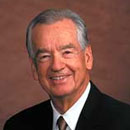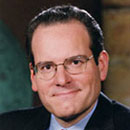Colorado leads growing movement toward employee-owned businesses
Published in Business News
Danielle Carre and her husband Brad started to think about exit strategies.
The couple sat on the verge of retirement, but first needed to figure out the future of their Western Slope solar company, Empowered Energy Solutions.
Carre thought back to college, when she read about worker cooperatives in Spain.
“In the back of our minds, we always looked toward a way our employees could eventually become owners of the business,” she said.
Carre and her husband are part of a wave of Colorado business owners turning to employee-ownership models.
As the baby boomer generation ages out of the small business workforce — the so-called “silver tsunami” — legions of business owners like Carre must figure out succession plans. But the statistics are daunting: Only 15% of businesses nationwide are passed on to the next generation and only 20% of listed businesses sell, experts estimate.
Colorado economic officials hope to convince aging business owners to take another path: Sell the company to your employees. It’s a win-win, they say. Owners get a payout for retirement, while employees get the opportunity to build wealth and shape the future of their company.
The state is one of only three in the nation to have a dedicated employee-ownership office within the government, which provides technical support and tax incentives for companies transitioning to worker-owned businesses.
Since Gov. Jared Polis stood up the office in 2020, 70 businesses have converted into employee-ownership structures. Colorado is now home to more than 230 employee-owned companies, and increasingly has become a model for other states looking to replicate its success.
“Colorado is the leader across the country in the effectiveness of promotion, education and conversion of employee ownership,” said Steve Storkan, executive director for the Employee Ownership Expansion Network, a national nonprofit focused on expanding employee ownership across the United States. “Everyone is trying to replicate the Colorado model as much as they can.”
Employee stock ownership plans
Employee ownership comes in a few different forms.
By far the most popular one is called an employee stock ownership plan, also known as an ESOP. In the simplest terms, ESOPs are retirement plans through which the ownership of a company is held in trust for the benefit of the company’s employees. This structure provides attractive tax benefits in exchange for sharing ownership broadly with employees.
Employees accrue shares over time, and are paid out if they leave the company.
There were 129 ESOPs headquartered in Colorado as of 2022, the latest available year for federal data. That figure represents a 17% increase from the 110 companies in 2014. In total, there are 6,533 ESOPs in the United States, holding total assets of over $2.1 trillion, according to the National Center for Employee Ownership.
Mowa Haile, founder and CEO of Sky Blue Builders, a Denver contractor, converted his company to an ESOP in March. Haile came from a tech background, where stock ownership was much more common. But the practice hasn’t made a huge dent in construction.
He felt it was important to give his employees the chance to build their wealth. The stock ownership plan wouldn’t only impact his 53 employees, Haile said, but would also ripple to their families.
When Haile told staff late last year that he intended to convert the company to 100% employee-owned, he said they were ecstatic.
“By exiting, I still benefit from getting a buyout, but, in this case, I benefited from that and employees benefit in the long term,” he said.
Research shows ESOPs outperform standard companies on a variety of metrics.
The Rutgers School of Management and Labor Relations and the Employee Ownership Foundation found in a 2020 study that ESOPs outperformed other companies in job retention, pay and workplace health safety throughout the COVID-19 pandemic. ESOPs were three-to-four times more likely to retain staff and less likely by half to make pay cuts.
A 2018 study by the National Center for Employee Ownership found ESOP participants have more than twice the average total retirement balance of Americans nationally.
Haile, who stayed with Sky Blue Builders after the transition, said his company this year had its best financial return in 15 years. He’s also noticed a major difference in hiring, with the ESOP serving as a juicy incentive to join his firm.
“From a hiring perspective, it’s made it a lot easier to recruit employees,” Haile said.
Worker cooperatives
Worker cooperatives represent another small but growing form of employee ownership in Colorado.
In co-ops, workers own the business and adhere to the “one worker, one vote” democratic style of governance. Employees have representation on and vote for a board of directors. The workers share profits based on seniority, hours worked or other company-specific criteria.
There are roughly 42 worker-owned cooperatives in Colorado, up from 30 in 2021, according to the Center for Community Wealth Building, a Denver organization that helps companies convert to employee-owned businesses. There are 465 worker cooperatives across the country, employing around 7,000 people and generating more than $550 million in annual revenue, according to the Democracy at Work Institute, which tracks worker co-ops.
The Center for Community Wealth Building is one of two Denver organizations helping companies transition to employee-owned businesses, along with the Rocky Mountain Employee Ownership Center.
Sid Farber and two others started Moonshell Pizza Cooperative, a Denver catering business, last year after working in co-op development.
“We didn’t believe in the traditional ownership structure where you have to work for someone else and they own the product of your labor,” he said. “We saw that as an inherently unequal structure. We wanted to get away from that and toward something that builds wealth for everyone.”
The company now counts four employee-owners. Workers start as regular employees; after six months, they can become provisional members, where they get the rights and responsibilities of being an owner without the same $1,500 buy-in. Member meetings consist of business education, where employee-owners learn about how the company does the books.
The kitchen gets hot and employees often encounter 12-hour work days. But it just feels different than other jobs, Farber said.
“I wanted to be part of an organization that I actually had a democratic say in,” he said. “It’s probably the best employment experience I’ve ever had.”
Employees say the opportunity to become a co-owner was daunting initially, but has been immensely rewarding.
Kelly Moss didn’t know much about cooperatives when Carre told her of the owners’ succession plans for Empowered Energy Solutions. But now she has a seat at the decision-making table and a deeper investment in the company’s future. It’s hard to find career growth opportunities on Colorado’s Western Slope, Moss said, so locking in an ownership stake represented a huge win.
“It’s exciting to be offered more ownership in something and have your opinion and your voice matter a bit more,” she said.
There’s been a huge uptick in interest in employee-ownership models in recent years, said Minsun Ji, executive director of the Rocky Mountain Employee Ownership Center.
“In 2012, no one had any idea why we exist,” she said. “We’re at a very exciting moment right now.”
Experts pegged the rise in interest as a confluence of demographical and economic factors.
One is the so-called “silver tsunami” of the baby boomer generation aging out of the workforce.
Across the United States, an estimated six in 10 business owners plan to retire or sell their businesses within the next 10 years. In Colorado, nearly half of the state’s small business owners are 55 or older, according to state figures. Small businesses, meanwhile, account for about 99.5% of Colorado’s businesses.
Then there’s the response to extreme corporate consolidation across myriad industries.
“People are trying to respond to those power imbalances, those feelings of domination,” said Paul Bindel, cooperative development director at the Center for Community Wealth Building. “Co-ops are a way to take back some of that autonomy.”
Colorado gets involved
Polis, in particular, has shown significant interest over the years in employee-ownership models, driving Colorado to be a leader in this space.
“It’s true that when employees succeed, businesses succeed, and when businesses succeed, so should employees,” the then-congressman wrote in a 2017 opinion article. “Employee-owned businesses are one way we can ensure more people have a fair shot at the American dream and increase overall productivity.”
Soon after moving into the governor’s office in 2019, Polis established the Employee Ownership Commission, which he tasked with educating businesses and communities on the benefits of employee ownership; establishing a network of technical support for interested businesses; and removing barriers to development to advance employee-owned businesses.
The following year, the governor created the Colorado Employee Ownership Office. The office provides a network of training, support, education and consulting for businesses considering employee-ownership structures. It also helps connect employee-owned businesses with attorneys and financial and accounting experts, as well as other employee-ownership organizations.
“Employee-owned businesses promote a higher quality of life for employee-owners, including higher wages, less turnover, access to better benefits and job security,” the office states on its website. “For the business owner, they get the benefit of a more engaged workforce, a guaranteed succession plan and a way to attract and retain top talent.”
The state also offers a selection of tax breaks to incentivize companies interested in converting to employee-owned. Businesses can receive tax credits of up to 50% of their conversion costs, up to $150,000 for ESOPs and $40,000 for worker-owned cooperatives and employee-ownership trusts.
These tax credits were funded by a 2021 bill that allotted $50 million to fund professional service costs of conversion to employee ownership. Subsequent legislation has expanded the tax credits and eligibility criteria to help more businesses take advantage of the program.
Colorado has seen 70 companies convert to employee-ownership models since 2021, according to state data, a significant uptick from the one-to-three conversions per year before the Employee Ownership Office came online.
“We’re seeing big increases” in interest, said Nikki Maloney, director of business support for the Colorado Office of Economic Development and International Trade. “Colorado is a leader in this space and we hope to continue that way.”
Twenty-four states operate some form of an employee-ownership center, though only Massachusetts, Washington and Colorado have permanent offices as part of state government. Other states rely on independent nonprofits or centers within universities to handle the work.
Storkan, of the Employee Ownership Expansion Network, said Colorado leads the way due to effective outreach and education, as well as top-down leadership from the governor.
“Colorado is definitely heads and tails above everyone else,” he said.
To date, Colorado has issued employed ownership tax credits to 11 applicants — including to Haile and Carre’s businesses — with another 12 applications in the program queue, state officials said.
Haile said the $150,000 in tax credits he received for converting to an ESOP made a huge difference when considering whether to sell to a private equity firm or another large contractor. Carre received state tax credits for half of the $20,000 in costs needed to convert her business into a worker-owned cooperative.
She and her husband plan to stay on with the business for another two years or so to ensure the transition to worker co-op goes smoothly.
“Employee ownership is really the wave of the future for businesses,” Carre said.
©2024 MediaNews Group, Inc. Visit at denverpost.com. Distributed by Tribune Content Agency, LLC.












Comments